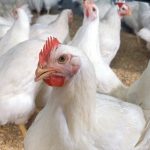The regime for U.S. government inpsections on imports of Canadian meat will be back to normal Wednesday after audits found no safety risk to the U.S. meat-eating public, U.S. officials announced Tuesday.
In a letter to the Canadian Food Inspection Agency’s (CFIA) meat programs division, dated Tuesday, U.S. Department of Agriculture (USDA) official Dr. William James said USDA’s Food Safety and Inspection Service (FSIS) would resume “normal levels of product examinations” on meat and poultry products and pasteurized egg products on Wednesday.
Also, FSIS will resume “normal levels” of testing for listeria and salmonella in ready-to-eat products, said James, acting assistant administrator for the international affairs office at FSIS.
Read Also

U.S. criticizes Mexico’s handling of screwworm near border
U.S. Agriculture Secretary Brooke Rollins on Thursday said Mexico has not adequately enacted protocols to curb the spread of New World screwworm.
USDA had announced earlier in November that it would increase its testing of Canadian meat at the border for E. coli O157:H7, salmonella and listeria, pending the results of an audit of CFIA’s investigation of unsafe practices at an Alberta beef packing plant and a separate audit of other exporting packers in Canada.
FSIS had also planned to put a hold on the products picked for testing, for at least three days, pending test results, rather than allow them to continue to their destination as per usual. However, the agency backed away from that part of the plan after a week, during which time Canadian exporters curtailed or stopped their shipments.
FSIS’ James told CFIA on Tuesday that its audits found the “unsafe practices” at the ill-fated Ranchers Beef plant near Calgary were not used by other plants.
James also noted that seven federally-inspected Canadian packers, which earlier this summer had either been delisted or threatened with delisting from the roster of FSIS-accredited exporters to the U.S., were found in their audits to now have “corrective actions” in place.
“Additionally,” James wrote, “the increased testing (this month) has not revealed any problems with Canadian products exported to the United States.”
That said, James noted that FSIS will continue testing of raw ground beef, raw beef trim, boxed beef and “subprimals” normally sent for grinding for E. coli O157:H7. FSIS had not previously tested Canadian beef trim.
The level of testing for E. coli will be decided after FSIS completes its analysis of eligible beef imports from “all equivalent countries,” he wrote.
FSIS’ extra measures had come shortly after it implicated Ranchers Beef in one of the largest E. coli-related recalls of beef in U.S. history. The agency said meat from the Balzac, Alta., plant was the likely source of dozens of cases of E. coli illness in the U.S. this summer.
Due to the size of the recall, major U.S. burger maker Topps Meat — which bought beef trim from the now-shuttered Ranchers Beef plant — was forced to close its own business, and, last week, to file for bankruptcy.
CFIA continues to investigate Ranchers Beef relating to a number of E. coli-related illnesses across Canada from this summer and has announced several product recalls, but hasn’t yet specifically named Ranchers Beef as the source of E. coli in any of those illnesses.















